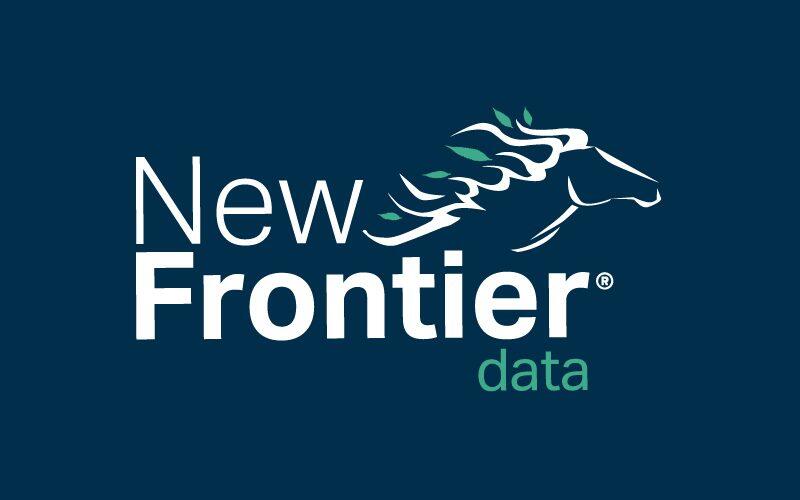As Regulators and Retailers Address Vaping Risks, Consumers Respond in the Marketplace

Vape Sales Decrease in Response to Health Crisis
September 22, 2019
328% Increase in U.S. Hemp Cultivation Acreage: New Frontier Data Releases 2019 U.S. Hemp Study
September 30, 2019By New Frontier Data
Throughout the past month, the vaping sector has been shaken by the sudden emergence of a mysterious lung illness related to the use of e-cigarettes or vape pens, with hundreds of illnesses diagnosed and eight reported deaths to date.
The industry at large is paying close attention to the impacts and potential complications from the incidents. Major vape brands including Dosist and Canndescent have issued statements affirming that their products are free of an implicated additive,, while High Times has posted messages warning consumers not to buy or use any unregulated products.
The issue is multifaceted and can be complicated; as reported by the recent Center for Disease Control & Prevention (CDC) advisory, not all victims seemed to have used a single common substance – some but not all used THC, others only use e-cigarettes, and many reportedly vaped multiple substances.
Though vitamin E acetate had early been identified as a potential cause of the outbreak, neither the CDC nor the U.S. Food & Drug Administration (FDA) has confirmed such validity, and scientific experts have expressed doubts about its risk. Meantime, no single ingredient —including vitamin E — has been found across all the samples. The director of the FDA’s Center for Tobacco Products disclosed that the focus of a criminal investigation is centered on the supply chain.
Given that vitamin E acetate has been used in e-cigarettes and vape formulations since well before the illnesses came to light, New Frontier Data’s Chief Science Officer Reggie Gaudino is dubious that the cause would be due to vitamin E alone, but instead suspects another, less familiar chemical or contaminant. “I’d say we are looking for something more recently introduced, or it’s something that was present but is now being misused by newer entries into the market that are less knowledgeable,” he said. Adding flavoring to vape cartridges is a trend which has gained popularity in recent years, “so it may be that something to do with flavoring, or the method of adding flavoring, is involved.”
New Frontier Data’s Senior Economist Beau Whitney, who last Wednesday provided expert input to the CDC, reinforced the need for a broad approach toward identifying the origin of the illnesses. “Given how quickly this has come on, all aspects of the supply chain need to be examined, including vape/cartridge suppliers,” he said, noting that there are many producers of vape hardware operating in relatively unregulated markets overseas, which may be supplying cheaply produced elements, particularly to unscrupulous or reckless producers in illicit markets. “Once the root cause of the illness is identified, tighter regulation is appropriate to ensure public safety.”
While more investigation is needed before drawing any conclusions as to specific causes of the illnesses, the latest cannabis sales data indicate that consumers have taken notice, and in some markets are purchasing vapes at lower rates than from before news of the illness became widespread.
Data from vape sales across selected markets shows that the share of vapes fell 15% in the week of September 1, alone. However, impacts have varied widely across states, with local market dynamics appearing to have significant influence toward consumers’ response.
The impact amid medical markets – e.g., New Mexico, Montana, Maryland, Arizona – has been acute, suggesting that consumers whose use of vapes is primarily medicinal or therapeutic are more alert to potential risks, and curbing their use.
Among adult-use markets, the impact has been most pronounced in Oregon, the state where the only death reportedly linked to a legally purchased vape pen occurred. Comparatively, other mature adult-use markets, (CO, WA, CA) have seen far less impact, suggesting that consumers in relatively established markets are less likely to suspect the safety of well-established brands and products with which they share some history.
Notably, the contraction was also marked in two new and canna-tourism heavy markets – Nevada and Massachusetts. The pattern may indicate canna-tourists to be less trusting of vape pens from outside their own markets than might be resident consumers having more familiarity and experience with the locally available brands.
Long-term impacts for consumers remain to be seen and will be shaped by the responses made from government and industry alike.
Within a matter of days, President Trump sent mixed messages about a proposed ban of e-cigarettes. Conversely, Canadian government officials have stated that physicians from its version of the CDC would first rule out any other infectious diseases before considering patients as vaping-specific cases, and then focus on any history of vaping or e-cigarette use in the previous 90 days. Health authorities in the United Kingdom stand in support for e-cigarettes as a smoking-cessation tool.
On Friday, Walmart halted sales of e-cigarettes after Rite-Aid pharmacies and other national retailers Dollar General and Costco had already done so.
Brands and retailers should be prepared to address consumers’ concerns while refraining from drawing conclusions not yet confirmed by science, as incorrectly assigning blame could undermine both the public interest and the industry’s credibility.
In the broader market, it is unlikely that frequent cannabis consumers will significantly reduce their spending for cannabis in general, though they may temporarily transition away from vapes and toward other product forms during the period of uncertainty.
The majority of frequent cannabis consumers smoke flower, even if they also consume other product forms. Since recent health concerns are limited to the vape category, consumers are more likely to reallocate their spending (i.e., by buying edibles or flower) than by eliminating purchases altogether. Indeed, analysis of the retail sales data from Jane Technologies, Inc., shows that flower, pre-rolls, and tinctures are categories which have seen increases in market share within states experiencing the sharpest contractions.
The impact on demand will likely be most acute among new consumers having been exclusively using vapes, as they may be more reluctant to try other, unfamiliar cannabis product types (especially other combustion-based products), and may thus limit or suspend their use of cannabis until the safety risks have been mitigated.
While flower is still the largest product category (46% of sales so far this month), vapes have gained popularity as a product form over the last two years, accounting for 30% of sales in legal markets so far this month, up from 18% in October 2017. A significant contraction of vapes sales over the coming weeks or months would impact a key area of retail sales growth. It remains to be seen how much further sales may decline.
The recent outbreak raises the likelihood of greater regulatory industry oversight. As noted by Whitney, the CDC, for instance, is conducting public-information outreach while also being methodological in its investigation of the cause.
Its general recommendations to consumers include: 1) that those concerned should consider refraining from e-cigarette or vaping products; 2) that adults using e-cigarettes containing nicotine to quit cigarette smoking not return to smoking cigarettes; and 3) that anyone recently using an e-cigarette or vaping product and experiencing reported symptoms should see a healthcare provider.
More specifically for vaping consumers, the CDC warns that “anyone who uses an e-cigarette or vaping product should not buy these products (e.g., e-cigarette or vaping products with THC or CBD oils) off the street, and should not modify or add any substances to these products that are not intended by the manufacturer.”
As the outcomes and implications of the investigation unfold, it remains to be seen how the illegality of cannabis under federal law might impact the agency’s ability to use its regulatory powers to address the public’s health interests. If the recent outbreak precipitates extensive bans or heavy restriction of vapes, the cannabis vape sector could face an existential threat at an important point in the growth of the industry and expansion of legal cannabis.
Canadian health agencies last week called for immediate action in restricting advertising and flavoring as with tobacco, as experts noted the recent introduction of popular technological methods which are not yet fully studied or understood.
The CDC guidance will likely dent demand in the large and growing illicit vape market, and add to calls for legalization in the interest of reducing consumer risk in unregulated markets.
The development of uniform quality metrics, harmonized production standards, and a transparent supply chain would not only minimize the likelihood of errant products’ entering the market, but would also streamline the industry’s ability to intercept, remove, and traceback adulterated products, remedying public impact.
Ultimately, establishing an effective national framework will require amending and adapting federal policy, whereby sound, and science-based, guidelines are developed to optimize product quality and assure consumer safety.




